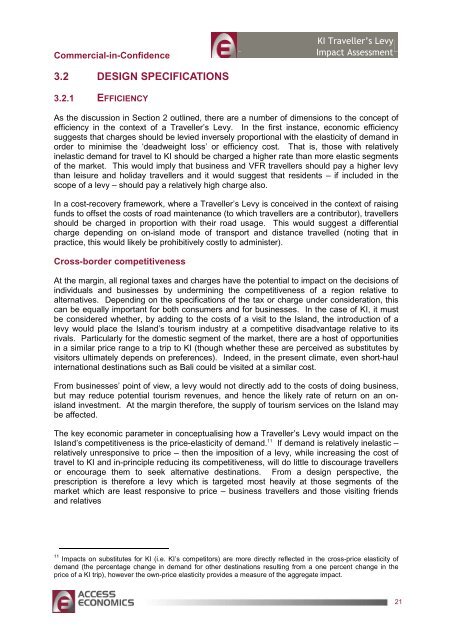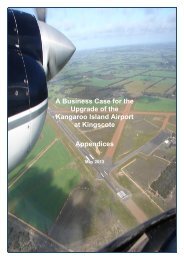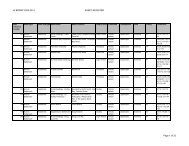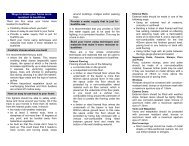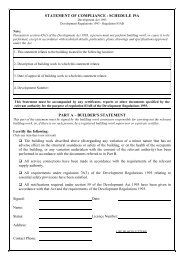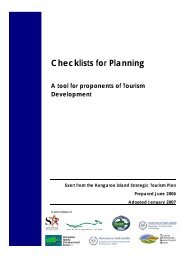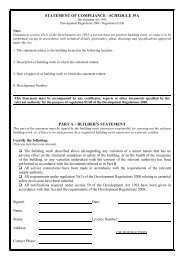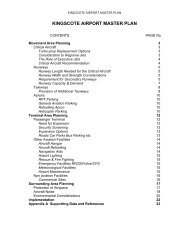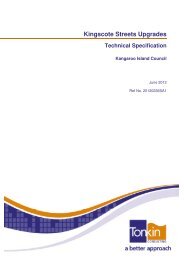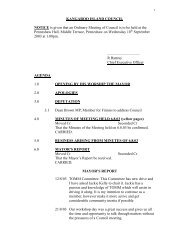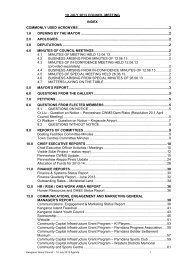KI Traveller's Levy Economic Impact Assessment - Kangaroo Island ...
KI Traveller's Levy Economic Impact Assessment - Kangaroo Island ...
KI Traveller's Levy Economic Impact Assessment - Kangaroo Island ...
Create successful ePaper yourself
Turn your PDF publications into a flip-book with our unique Google optimized e-Paper software.
Commercial-in-Confidence<br />
<strong>KI</strong> Traveller’s <strong>Levy</strong><br />
<strong>Impact</strong> <strong>Assessment</strong><br />
3.2 DESIGN SPECIFICATIONS<br />
3.2.1 EFFICIENCY<br />
As the discussion in Section 2 outlined, there are a number of dimensions to the concept of<br />
efficiency in the context of a Traveller’s <strong>Levy</strong>. In the first instance, economic efficiency<br />
suggests that charges should be levied inversely proportional with the elasticity of demand in<br />
order to minimise the ‘deadweight loss’ or efficiency cost. That is, those with relatively<br />
inelastic demand for travel to <strong>KI</strong> should be charged a higher rate than more elastic segments<br />
of the market. This would imply that business and VFR travellers should pay a higher levy<br />
than leisure and holiday travellers and it would suggest that residents – if included in the<br />
scope of a levy – should pay a relatively high charge also.<br />
In a cost-recovery framework, where a Traveller’s <strong>Levy</strong> is conceived in the context of raising<br />
funds to offset the costs of road maintenance (to which travellers are a contributor), travellers<br />
should be charged in proportion with their road usage. This would suggest a differential<br />
charge depending on on-island mode of transport and distance travelled (noting that in<br />
practice, this would likely be prohibitively costly to administer).<br />
Cross-border competitiveness<br />
At the margin, all regional taxes and charges have the potential to impact on the decisions of<br />
individuals and businesses by undermining the competitiveness of a region relative to<br />
alternatives. Depending on the specifications of the tax or charge under consideration, this<br />
can be equally important for both consumers and for businesses. In the case of <strong>KI</strong>, it must<br />
be considered whether, by adding to the costs of a visit to the <strong>Island</strong>, the introduction of a<br />
levy would place the <strong>Island</strong>’s tourism industry at a competitive disadvantage relative to its<br />
rivals. Particularly for the domestic segment of the market, there are a host of opportunities<br />
in a similar price range to a trip to <strong>KI</strong> (though whether these are perceived as substitutes by<br />
visitors ultimately depends on preferences). Indeed, in the present climate, even short-haul<br />
international destinations such as Bali could be visited at a similar cost.<br />
From businesses’ point of view, a levy would not directly add to the costs of doing business,<br />
but may reduce potential tourism revenues, and hence the likely rate of return on an onisland<br />
investment. At the margin therefore, the supply of tourism services on the <strong>Island</strong> may<br />
be affected.<br />
The key economic parameter in conceptualising how a Traveller’s <strong>Levy</strong> would impact on the<br />
<strong>Island</strong>’s competitiveness is the price-elasticity of demand. 11 If demand is relatively inelastic –<br />
relatively unresponsive to price – then the imposition of a levy, while increasing the cost of<br />
travel to <strong>KI</strong> and in-principle reducing its competitiveness, will do little to discourage travellers<br />
or encourage them to seek alternative destinations. From a design perspective, the<br />
prescription is therefore a levy which is targeted most heavily at those segments of the<br />
market which are least responsive to price – business travellers and those visiting friends<br />
and relatives<br />
11 <strong>Impact</strong>s on substitutes for <strong>KI</strong> (i.e. <strong>KI</strong>’s competitors) are more directly reflected in the cross-price elasticity of<br />
demand (the percentage change in demand for other destinations resulting from a one percent change in the<br />
price of a <strong>KI</strong> trip), however the own-price elasticity provides a measure of the aggregate impact.<br />
21


